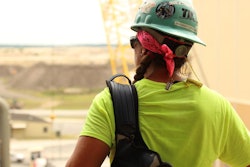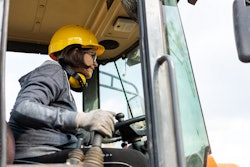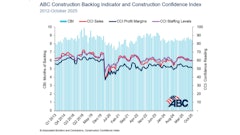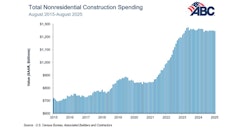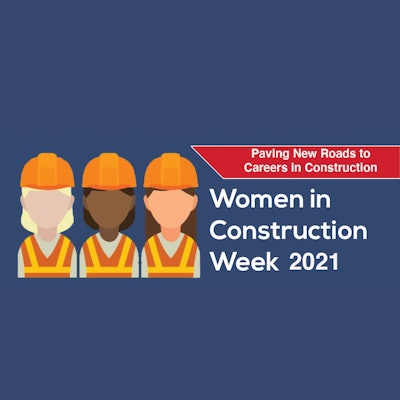
The share of women working in construction trades in 2018 was the highest in twenty years, but women remain strongly underrepresented in the trades: fewer than one in twenty (3.4 percent) of construction trades workers in 2018 were women. Female careers in the construction industry have remained shockingly low for decades, due in large part to the discrimination that blocks women from entering and staying in the field.
Still as the industry is facing detrimental hiring shortages, we need to take time to both continually recruit women to the industry as well as celebrate the ladies who have made this industry their home.
National Women in Construction Week (WIC) is an opportunity to do just that. The focus of WIC Week is to highlight women as a visible component of the construction industry. WIC Week helps raise awareness of the opportunities available for women in the construction industry and to emphasize the growing role of women in the industry. The 2021 event will be held March 7-11 but it's something we should focus on year-round.
Here are five ways to both recruit and retain women for careers in construction.
1. Focus on the Benefits
Construction trades provide well-paid jobs that do not require a college degree. In 2018, women working full-time in construction and extraction occupations made $785 per week at the median, compared with $834 for men. The gender wage gap in construction is more narrow than for women in the general workplace. While women overall earn 81 cents for every dollar earned by a man, women in construction make 94 cents for every dollar earned by a man.
Careers in construction can also offer women job security, competitive benefits, paid vacation and the satisfaction of building something that really matters to the communities in which they live. We should focus on the benefits of these careers instead of the potential hardships.
2. Change the Perception
There is a longstanding perception that all jobs in the industry require extensive physical labor in frequently challenging and/or dangerous conditions. And while there are individuals, including women, who are open to this type of work, today’s workforce is less enamored with these types of roles. However, the growing presence of technology creates many new job opportunities that women may excel at, plus there are managerial positions available such as project managers, crew foremen, safety managers and more. Construction is no longer all about manual labor and the idea that women are not physically strong enough to work in it.
3. Provide Comprehensive Training
There is unfortunately a psychological barrier for women to enter a job that they feel is a man’s job. But, women need to know that careers in construction are not just reserved for men. Jobs are for people and companies just need to train the right ones, regardless of gender.
What many workers, including women don’t realize is that construction careers are accessible through apprenticeships, which provide paid on-the-job learning combined with post-secondary classroom instruction. Women-focused pre-apprenticeship programs have been successful in increasing women’s access and success in construction careers.
Read Next: Clear A Path to Bring More Women Into Construction
Companies can also lower the mental barrier of the job and consider creating an all-women’s crew. This can help new hires feel more comfortable learning a sometimes-challenging new skill. Women can learn from each other and not feel the pressure of needing to be perfect in front of their maybe more-experienced male colleagues.
These jobs take work ethic, commitment and determination. If your potential candidate has those things, you can teach them the rest.
4. Advocate for Change
In order to effectively create change, you need to start young. Children are being exposed to potential careers as young as kindergarten and the industry needs to start tailoring their message to young girls, not just the boys. We need to change the lingering outdated perceptions that exist of what it means to work in construction, not just amongst women, but amongst young people in general as those that influence them and their career choices are their parents and teachers.
The industry also needs to advocate for equality. When women do enter these careers, company leadership needs to make sure they are being respected. Ensure that there are female Personal Protective Equipment (PPE) options in your catalogue which includes work clothing that fits properly and enables women to do their jobs comfortably, well and safely. Although this might seem basic, there are too many companies in the industry which do not yet do this.
5. Support Career Advancement
Companies need to focus on rewarding and promoting individuals based on results, rather than perpetuating a gender bias which may exist in terms of deciding which individuals to promote. This can change by creating a mentoring culture where senior staff members are encouraged to invest time in women within the company so they can be brought through to the top ranks.
There's no denying that there is a lack of women in the construction trades and this should be seen as a huge problem. With an industry struggling to to fill a labor shortage and the inevitable transitions and changes technological advances will bring, it is time for the industry to focus on how to expand its female work force, and it's time for women to see the construction trades as a viable career path.






